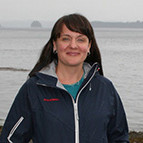The implementation of the Magnuson Act in 1976 heralded a significant change in American fisheries and indeed the industry on a global scale, as we reclaimed our shores from the big fishing nations of Japan, Russia and England.
The 1990s brought the constriction that often follows a boom. Another 20 years later, and we are potentially looking at the next wave that could bring about significant change — quality fishing data.
Technological development expanded fishing efforts — laymen’s sonars and radars suddenly allowed relatively inexperienced people to take up commercial fishing along with the aid of the federal government’s fish boat building loans. The broader accessibility of fisheries work combined with federal incentives to invest and our greenhorn approach to management resulted in some overexploitation of commercial stocks. As a result, the pendulum swung, and we implemented overcautious management with the precautionary approach — it’s always safest to just not go fishing. If you’ve ever walked the docks of a truly salty town, this is not the vibe you will find among seafarers.
In the simplest terms, most wild-capture management is a slippery slope. The more we interfere, the more we have to compensate for our own interference. One could also argue that fishing on a commercial scale is the first phase of interference. We do know that nature does not work on the mythical balance we seek through our first attempts at fishery management. As long as there are living beings on this planet, there will be imbalance.
So where do we go from there? Sometimes it feels like the myth of Sisyphus, in which we are doomed to push the boulder of management up the hill until just before we reach the top, it rolls past us, out of control. And we are forced to retrieve it and start anew, one push at a time.
In truth, we take more of a scattershot approach — quotas, paperwork, limited entry, paperwork, monitoring, paperwork, vessel tracking, and don’t forget the requisite paperwork.
Unlike Sisyphus, however, we are not cursed. We have the ability to improve our methods and the data on which we make our decisions. We can stop to learn more about our boulder and the terrain in which we are working. That is exactly what Bill Karp (former director of the North Pacific and Northeast fisheries science centers) and Ray Hilborn (University of Washington marine sciences professor) are working toward, albeit in two different initiatives.
Karp’s parting gift as director for the Northeast science center was to call for the use of more cooperative research and data in New England. Hilborn made headlines this year with a challenge (et al) to the Lenfest report that declared precautionary protections for forage fish.
These two leaders in fishery science are speaking up for quality data — some of which we already have and are not using effectively. Their efforts give me hope that we could be on the cusp of a new boom — a data boom.







